|
Health Programs : |
|
|
|
|
|
1. Program for Health & Sensation : Homeopathic Clinic |
|
|
|
|
|
To cater curative service for the village people
we are running homoeopathic clinic daily in the institute.
|
|
|
|
|
|
|
|
. |
|
|
|
|
2. Family Counseling Centre |
|
|
|
|
|
What’s the point of counseling if you don’t want to get back together?
Family counseling can help couples come to terms with the many changes that happen
when a relationship breaks up. It can help parents make decisions about arrangements
for their children and how they will share parenting after
|
|
|
separation. The Family Law Act encourages parents to sort out differences over their
children themselves instead of going to court. Family counseling can also help where
there are disagreements about the division of property.
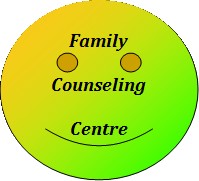
|
 |
|
|
What is family counseling?
Family counseling is
the name for counseling under the Family Law Act. It helps people with relationship
difficulties better manage the personal or interpersonal issues to do with children
and family during marriage, separation and divorce. Family counseling may be about
hurt feelings, problems between you and your partner or another person in the family,
new living arrangements and issues relating to the care of your children and financial
adjustments.
|
|
|
|
|
|
|
|
. |
|
|
|
|
3. HIV & AIDS Camp |
|
|
|
|
|
Sexual development is a normal part of adolescence. Most adolescents go
through these changes without significant
|
|
|
problems. Nonetheless, all adolescents need support
and care during this transition to adulthood, and some need special help. The lives
of millions of
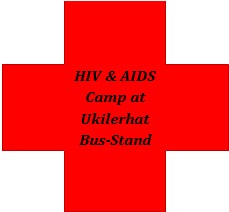
|
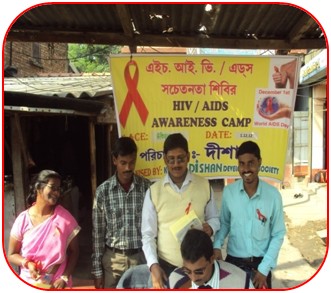 |
|
|
adolescents worldwide are
at risk because they do not have the information, skills, health services and support
they need to go through sexual development during adolescence. Young people aged
between 10 and 24 years represent 30% of India’s total population. In many cities
Majority of young people are sexually experienced by the age of 16-19 years and
premarital sex is common.
|
|
|
|
|
|
|
|
. |
|
|
|
|
4. Institutional deliveries Camp |
|
|
|
|
|
India’s maternal and child health program have not aggressively
promoted institutional deliveries, except in high-risk cases. The reason is that
provision of facilities for institutional delivery on a mass scale in rural areas
is viewed as a long-term goal requiring massive health infrastructure investments.
Institutional delivery is nevertheless desirable, inasmuch as it reduces the risk
of both maternal and infant mortality.
The likelihood of delivering in a medical institution
is influenced not only by use of antenatal-care services but also by such potentially
confounding factors as mother’s age, education, exposure to mass media, household
standard of living, and access to health services, these other factors are statistically
controlled (i.e., held constant) when estimating the effects of antenatal care on
institutional delivery. Logistic regression is used for this purpose.
The results indicate that, even after statistically
controlling for other factors, mothers who received antenatal check-ups are two
to five times more likely to give birth in a medical institution than mothers who
did not receive any antenatal check-up. Among the other factors considered, mother’s
age and education and child’s birth order also have
strong effects on the likelihood of institutional delivery. Household
standard of living also has a substantial effect in most cases. Contrary to expectation,
access to health services, as measured by availability of a hospital within 5 km
of the village and by availability of an4
Overall, antenatal care is the strongest predictor of
institutional delivery, a finding that has important program implications. It suggests
that it is possible to promote institutional delivery by promoting antenatal check-ups
and associated counseling. Given that distance to a hospital does not have a significant
effect on institutional delivery, it may not be necessary to create new hospitals
(at least not for the purpose of encouraging institutional delivery), but rather
to focus on expanding the availability and quality of services at existing facilities,
as well as counseling and educating mothers about the importance of giving birth
in medical institutions under the supervision of trained professionals. Because
a much higher proportion of institutional deliveries take place in private-sector
facilities than in public-sector facilities in three of the four states, efforts
should also be made to strengthen private-sector health facilities to make them
more accessible to rural mothers, in terms of cost and quality of services.
|
|
|
|
|
|
|
|
. |
|
|
|
|
5. Prevention of early Marriage Camp |
|
|
|
|
|
Today, the devastating impact of child marriage continues to be ignored
in the developing world. Millions of child brides, some only just past puberty,
are denied access to health, education and economic opportunities. The majority
|
|
|
of them are burdened with the roles and responsibilities of wives and mothers without
adequate support, resources or capabilities.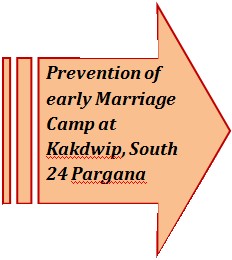
|
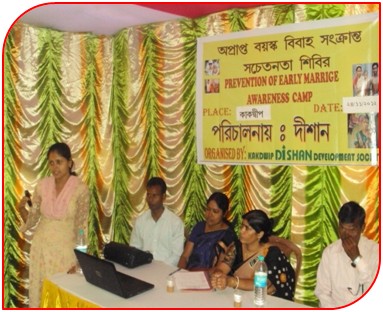 |
|
|
Child marriage
is a public health concern that violates international human rights laws and seriously
compromises the development and health of affected individuals. Child brides are
pressured to initiate sexual activity and become mothers too early.
“Kakdwip
Dishan Development Society” organizes an awareness camp in local area of kakdwip
also we distribute leaflet / handbill in this year.
|
|
|
|
|
|
|
|
. |
|
|
|
|
6. Family Planning Camp |
|
|
|
|
|
High levels of illiteracy, poor access to information, poverty, and gender-based
disparities serve as significant barriers to family planning. These include social
stereotyping, lack of male involvement in family planning, and continuing |
|
|
open discrimination against the girl child, adolescent girls and women.
 |
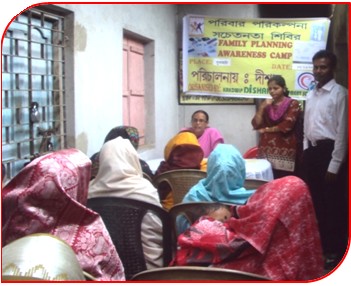 |
|
|
DiSHAN workers are required to regularly
visit households in their assigned areas in order to provide information related
to health and family planning, counsel and motivate women to adopt appropriate health
and family planning practices, and deliver other selected services.
Uncertain
of the consequences of the new target approach
however,
many states set local goals based on the previous year’s centrally assigned targets.
Women’s involvement in decentralized decision-making has yet to be fully operationalized
at the grassroots level. In many states, the involvement of the community and other
stakeholders, including Panchayati Raj Institutions, in needs assessments is reported
to be minimal.
|
|
|
|
|
|
|
|
. |
|
|
|
|
7. Women & Child Nutrition Camp |
|
|
|
|
|
This report provides clear evidence of
the poor state of nutrition among young children, women, and men in India and the
lack of progress over time, based on measurements of height and weight,
anemia testing, testing for the iodization of household cooking salt, utilization
of nutrition program, and information on child feeding practices and vitamin A supplementation.
Young children in India suffer from some of the highest levels of stunting, underweight,
and wasting observed in any country in the world, and 7 out of every 10 young children
are anemic. The percentage of children under age five years who are underweight
is almost 20 times as high in India as would be expected in a
|
|
|
healthy, well-nourished population and
is almost twice as high as the average percentage of underweight children in sub-Saharan
African countries. Although poverty
is an important factor in the poor nutrition situation, nutritional deficiencies
are widespread even in households that are economically well off. Inadequate feeding
practices for children make it difficult to achieve the needed improvements in children’s
nutritional status, and nutrition program have been unable to make much headway
in dealing with these serious nutritional problems.
Nutrition is the focal point of health
and well-being. Nutrition is directly linked to human resource development, productivity
and ultimately to the national growth. |
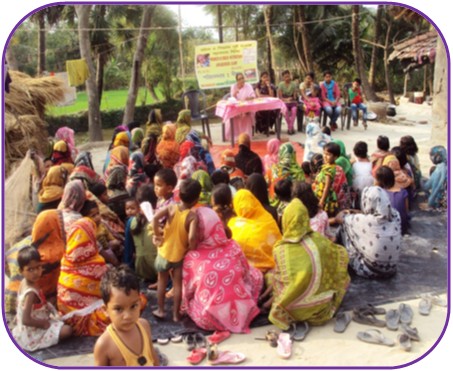 |
|
|
Malnutrition is a complex phenomenon.
It is both the cause and effect of poverty and ill health, and follows a cyclical,
inter-generational pattern. It is inextricably linked with illiteracy, especially
female illiteracy, lack of safe drinking water and proper sanitation, ignorance,
lack of awareness and ill health. It creates its own cycle within the large cycle
of poverty. |
|
|
|
|
|
|
|
. |
|
|
|
|
8. Drag De addiction |
|
|
|
|
|
Dishan Development Society (KDDS) organized drugs de-addiction camp
at Industrial area of Haldia town under the supervision of Secretary Mohan Kumar
Patra. The camp was inaugurated by Suryatapa Panda. The chairman of the organisation
Suryatapa Panda, while welcoming the guests said that the main focus of this camp
is to motivate the youth against use of drugs. Dr S. K. Das examined many drug addicts and apprised
them about the ill effects of drugs. Advocate Swapan Adhikary and other prominent
citizens appreciated the step taken by the KDDS in this regard and assured all possible
assistance to KDDS for this social and noble cause. |
|
|
|
|
|
|
|
. |
|
|
|
|
9. Pc & PNDT Program |
|
|
|
|
|
The pre-dominantly
patriarchal, social, cultural and religious set up based on the foundation that
the family line runs through a male has contributed extensively to the secondary
status of women in India. This has led to strong desire to avoid the birth of a
female child in the family resulting in decline in the child sex ratio at an alarming
rate in some of the States and Union Territories.
Misuse of the
techniques like amniocentesis to determine the sex of the fetus and subsequent abortions
if the fetus was found to be female was noticed by social activists in the 1980s.
Thereafter due to the relentless efforts of activists and after intensive public
debate all over India, the Parliament enacted the Pre-Natal Diagnostic Techniques
(Regulation and Prevention of Misuse) Act on 20th September 1994 and it was brought
into operation from 1st January, 1996, The said Act has since been amended with
effect from 14th February, 2003 to make it more comprehensive and renamed as “Pre-conception
and Pre-Natal Diagnostic Techniques (Prohibition of Sex Selection) Act, 1994”. The
techniques of pre-conception sex selection have been brought within the ambit of
the Act so as to pre-empt the use of such technologies, which significantly contribute
to the declining sex ratio.
|
|
|
|
|
|
|
|
. |
|
|
|
|
|
|
|
10. Blood Donation Motivation Camp |
|
|
|
|
|
Dishan Development Society has organized Health check up, Eye screening
camps and Blood Donation Motivation Camps Bhubannagar and surrounding villages at
Kakdwip in South 24 Parganas district in West Bengal.
|
|
|
|
|
|
|
|
. |
|
|
|
|
|
|
|
|
|
|
|
|